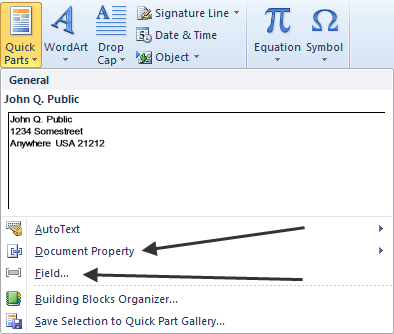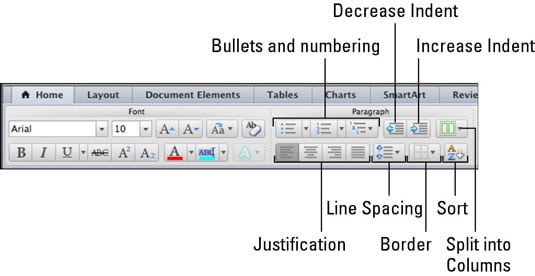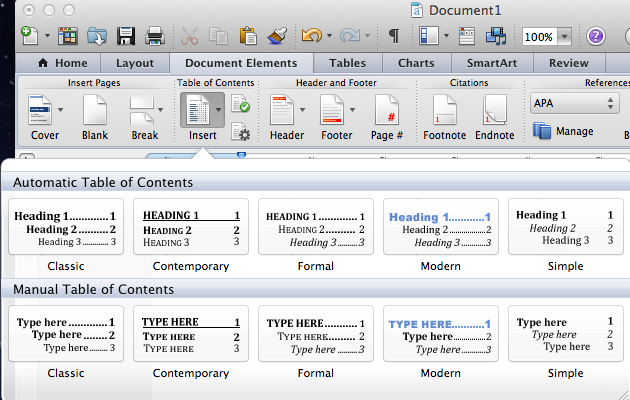- May 26, 2017 Create Custom Quick Part. To create custom quick parts in MS Word, you need to first insert the item in your document. For example, if you want to turn a table into a quick part, insert it. Customize it any way you want. The quick part will copy it down to the T. Apply a theme and/or style to it. When you’re done, go to the Insert tab on the.
- Mar 06, 2017 In the Microsoft Office 2011 14.7.2 Update volume window, double-click the Office 2011 14.7.2 Update application to start the update process, and then follow the instructions on the screen. If the installation finishes successfully, you can remove the update installer from your hard disk.

Fields in Word 2011 for Mac are an essential part of mail merge, page numbering, and other tasks. Some fields are very simple; others are quite complex. Getting to know Word fields in Office 2011 for Mac is probably easiest if you start with a new, blank Word document in Print Layout view. Word for Mac uses the function keys for common commands, including Copy and Paste. For quick access to these shortcuts, you can change your Apple system preferences so you don't have to press the Fn key every time you use a function key shortcut. If you're an avid user of Microsoft Word, you may find yourself typing out the same kind of content over and over again. There's a much easier way to go about this! The 'quick parts' and 'building blocks' features of Word can help you out when you need to repeat a specific block of text over several documents.
Office 2011 for Mac’s AutoText feature is so simple, yet so powerful, you might wonder how you got along without it. Use AutoText to teach Word for Mac 2011 to remember text that you use often and don’t feel like typing over and over. Word can then type that text for you.

There are five Auto features:
AutoText: When you type certain text, this feature instantly inserts an AutoText entry.
AutoText name: Each AutoText entry has a name so that you can refer to an AutoText entry by typing its name in a document and so you can manage them all in AutoText preferences, which we explain shortly.
AutoComplete: This is the process whereby a saved AutoText entry is added to a document when its name is typed.
AutoCorrect: This is the technology that the AutoText feature uses. You can consider AutoCorrect to be the parent of the AutoText feature.
Maybe you have to type your organization’s name often. Maybe you have to type a word or an expression that’s cumbersome, such as Nuclear Factor-Kappa B and Placental Apoptosis. To teach Word a word or expression, all you have to do is this:

Word For Mac 2011 Quick Parts Breakdown
Type the word or expression that you use often and select it.
With the text selected, choose Insert→AutoText→New.
This step summons the Create AutoText dialog with a suggested name for your AutoText entry.
(Optional) If you don’t want to use Word’s suggestion, type a new name in the Name field.
Click OK to close the Create AutoText dialog and add the entry to Word.
Word looks for the names of AutoText entries as you type, and when you begin to type the first few letters, AutoText displays a tooltip showing the first few words of the AutoText entry. Pressing Return or Enter fills in the rest of the text for you.
In this example, whenever you type Nuclear Factor, Word knows you want to use the long, awful Nuclear Factor-Kappa B and Placental Apoptosis expression in your document. You don’t have to use any of the words of the saved AutoText in the name you give to AutoText. You can invent your own AutoText naming scheme.
In their broadest definition, Word fields are special codes that perform various tasks. Fields in Word 2011 for Mac are an essential part of mail merge, page numbering, and other tasks. Some fields are very simple; others are quite complex. Getting to know Word fields in Office 2011 for Mac is probably easiest if you start with a new, blank Word document in Print Layout view.
In the following steps, you’ll collect three tools and then put them onto a toolbar so that you can use them later. You can drag them to the Standard toolbar or any other toolbar.
Follow these steps to drag these commands onto any toolbar of your choice:

Quick Parts Word 365
In Word, choose View→Toolbars→Customize Toolbars and Menus.
Select the Commands tab and make sure that the left pane shows All Commands.
Click in the right panel and then press the first letter of the command to bring you to that letter of the alphabet and save time.
Drag the ViewFieldCodes, InsertFieldChars, and UpdateFields commands to any toolbar.
Click OK to close the Customize Toolbars and Menus dialog.
Word For Mac 2011 Reviews
Where do Word fields hide on your computer? They quietly reside in a small, but powerful, dialog; choose Insert→Field. The Field dialog appears. Here you can insert a special code, dubbed a field code, into your Word document. The field code categories are listed on the left side of the dialog in the Categories list. The Field Names list on the right side of the dialog allows you to select a field code to insert into a document.
You can grab the Time Word field and put it into a blank document in order to pick it apart and see how it works. For this example, follow these steps:
Click the New button on Word’s Standard toolbar to open a new, blank Word document.
Choose Insert→Field.
In the Categories list, choose Date and Time.
In the Field Names list, choose Time.
The description in the dialog changes to The Current Time.
Click OK to close the Field dialog.